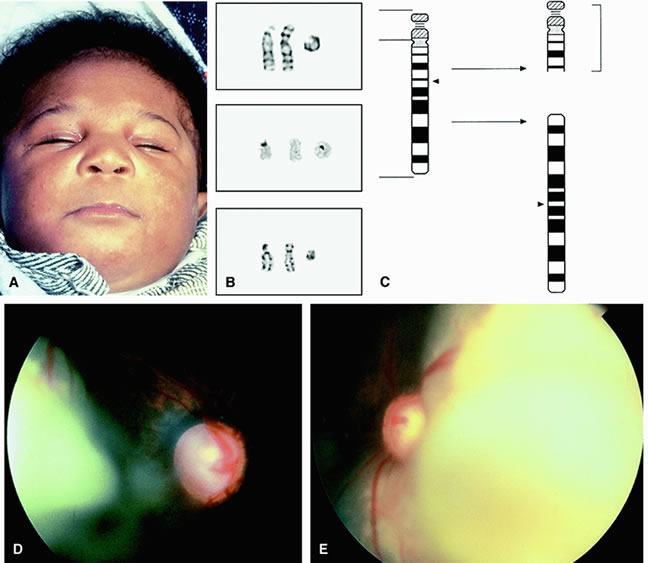

|
| Fig. 3. Failure to thrive and severe developmental delay as the initial manifestations of 13q syndrome. A. (Case #3) A 4-month-old child with slightly abnormal facies and low set ears. B. (Case #3) Cytogenetic analysis revealed mosaic ring chromosome 13. The chromosomes are shown in order from left to right as normal chromosome 13, derivative (13), and ring (13) with different staining methods. Top. G-banded chromosomes showing the normal chromosome 13, derivative (13), and ring (13). Middle. C-banded chromosomes showing positive staining for the normal 13 and ring (13). Bottom. BRdU stain of late replicating chromosomes. No difference is observed between the mirror images of der(13) chromosome. C. (Case #3) Ideogram of chromosome 13 rearrangement in which break occurred at the 13q14 locus resulting in ring (13) and derivative (13). The derivative (13) does not contain a centromere and would be expected to be lost in future cell divisions unless a neocentromere is formed. D. (Case #3) Examination of the right eye revealed multifocal retinoblastoma and enlarged cup to disc ratio consistent with additional congenital glaucoma. E. (Case #3) Examination of the left eye showed advanced retinoblastoma and optic disc changes to suggest congenital glaucoma. The eyes were successfully treated with chemotherapy and radiotherapy, but the child later died of intracranial neuroblastic malignancy (trilateral retinoblastoma). (B and C from Morrissette JJD, Celle L, Owens NL et al: Boy with bilateral retinoblastoma and an unusual ring chromosome 13 with activation of a latent centromere. Am J Med Genetics 99:21, 2001) |